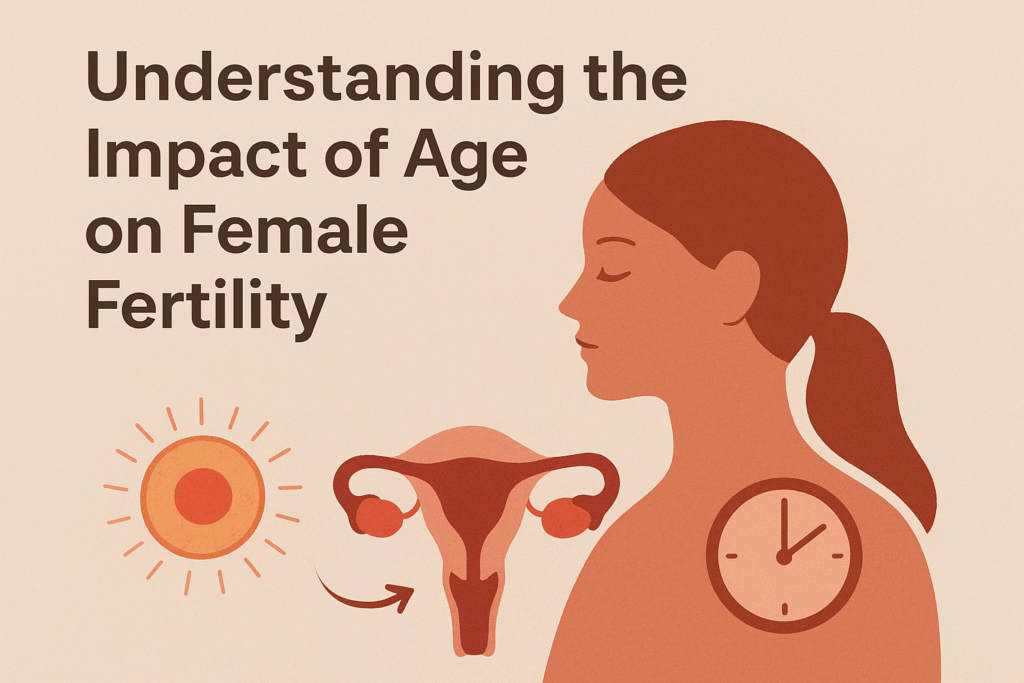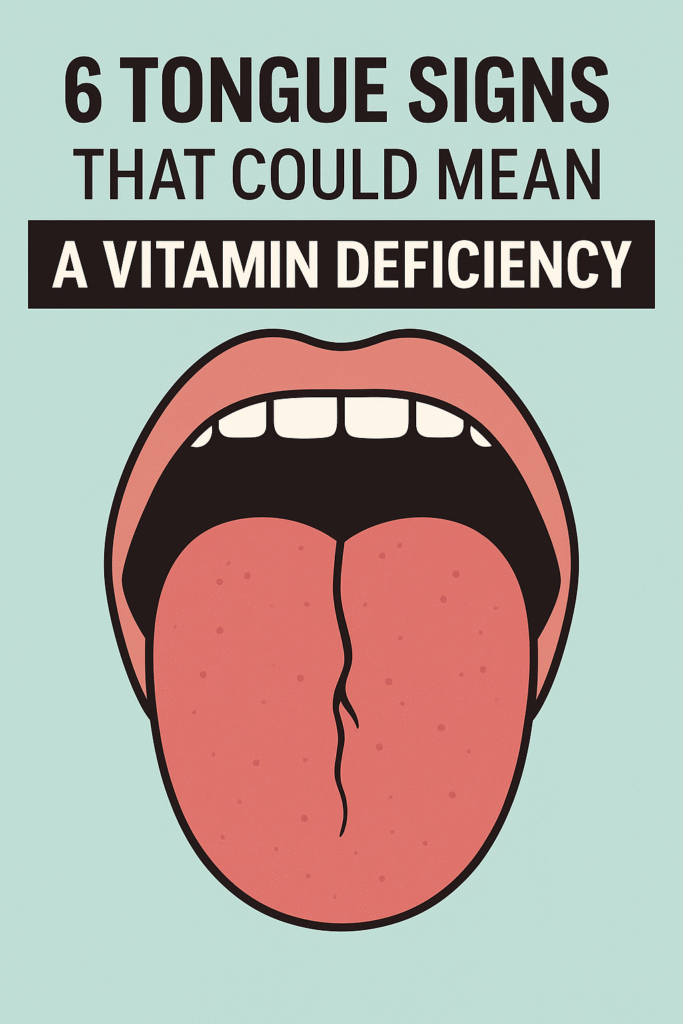
⚠️ Affiliate Disclaimer: This post may contain affiliate links, which means I may earn a small commission — at no extra cost to you — if you make a purchase through one of these links. I only recommend products or services I genuinely trust and believe can provide value. Thank you for supporting My Medical Muse!
Understanding the Impact of Age on Female Fertility: 9 Powerful Facts
Understanding the Impact of Age on Female Fertility
Fertility is one of the most delicate and vital aspects of a woman’s health, shaping not only her biological well-being but also her life choices and family planning journey. While modern medicine, healthier lifestyles, and advanced reproductive technologies have given women greater control over when to start a family, age remains one of the most influential factors in female fertility.
Unlike many areas of health that can be maintained or improved with lifestyle changes, fertility is uniquely tied to biology and time. Women are born with a finite number of eggs, and both the quantity and quality of these eggs decline naturally with age. This biological reality makes age one of the strongest predictors of a woman’s chances of conceiving, carrying a healthy pregnancy, and giving birth.
Understanding how fertility changes over time can be empowering rather than limiting, by learning about the natural shifts that occur in the 20s, 30s, and 40s, women can make informed decisions about when to try for children, when to seek medical guidance, and how to explore supportive options like fertility preservation or assisted reproductive technologies.
In this comprehensive guide, we’ll explore the science behind the female biological clock, uncover common myths, discuss the emotional and social pressures tied to age and fertility, and highlight the medical advancements that give women more choices than ever before. Whether you’re in your 20s and just starting to think about the future, in your 30s balancing career and family planning, or in your 40s exploring advanced fertility treatments, this blog will provide valuable insights to help you make decisions with clarity and confidence.
The Science of Female Fertility
Fertility is a complex interplay of biology, hormones, and timing. To understand how age influences a woman’s ability to conceive, it’s essential to first explore the science behind female reproductive biology. Three key factors, ovarian reserve, egg quality, and the menstrual cycle play pivotal roles in determining fertility potential.
1.The Ovarian Reserve
Unlike men, who produce millions of new sperm every day throughout their lives, women are born with a finite number of eggs (oocytes). This fixed supply steadily decreases over time and cannot be replenished.
- At birth: A baby girl carries approximately 1 to 2 million eggs in her ovaries.
- At puberty: By the time menstruation begins, only about 300,000 to 500,000 eggs remain.
- Over a lifetime: Despite this large starting number, only around 300 to 400 eggs will fully mature and be released through ovulation. The rest gradually deteriorate and are naturally reabsorbed by the body.
This progressive reduction in egg supply is known as the diminished ovarian reserve, and it becomes more pronounced with age. As the ovarian reserve shrinks, the chances of successful ovulation, fertilization, and pregnancy naturally decline. This is why age is one of the most significant predictors of fertility.
2. Egg Quality and Chromosomal Health
While the number of eggs is important, egg quality is equally critical. Younger eggs are generally healthier, with fewer chromosomal abnormalities, making them more likely to result in a viable pregnancy. As women age, however, the risk of chromosomal errors within eggs increases significantly.
Poor egg quality can lead to:
- Difficulty conceiving: Even if fertilization occurs, abnormal eggs may fail to develop properly.
- Higher miscarriage rates: A large proportion of miscarriages are caused by chromosomal abnormalities.
- Genetic conditions: The likelihood of disorders such as Down syndrome, Edwards syndrome, and Patau syndrome rises with maternal age.
For example, research shows that at age 25, the risk of giving birth to a baby with Down syndrome is about 1 in 1,250. By age 40, that risk increases to 1 in 100, and by age 45, it rises further to 1 in 30.
This illustrates that fertility is not just about whether eggs are present, but whether those eggs are genetically healthy enough to sustain a pregnancy.
3. The Menstrual Cycle and Fertility Window
Every menstrual cycle offers only a small window of opportunity for conception. This fertility window is typically about 5-6 days per month, the days leading up to and including ovulation.
- Before ovulation: Sperm can survive in the female reproductive tract for up to five days.
- At ovulation: An egg is released and remains viable for fertilization for about 12-24 hours.
- After ovulation: If fertilization does not occur, the egg dissolves, and menstruation follows about two weeks later.
As women age, hormonal changes affect the regularity and quality of these cycles:
- Cycles may become shorter or longer.
- Ovulation may become less predictable.
- In some cases, cycles may become anovulatory (where no egg is released).
Irregular ovulation makes it more difficult to identify fertile days, thereby reducing the likelihood of natural conception.
Together, ovarian reserve, egg quality, and menstrual cycle patterns form the foundation of female fertility, with age, all three undergo changes that gradually reduce the chances of conceiving naturally and increase the risks of complications.
Fertility and Age Milestones
Fertility doesn’t decline overnight, it changes gradually over the course of a woman’s life. Each decade brings unique opportunities and challenges, shaped by the natural biology of reproduction as well as social and lifestyle factors. Understanding these milestones helps women and couples plan for parenthood with greater clarity.
1.Fertility in the 20s
The 20s are often considered the prime years for fertility, when the reproductive system functions at its biological best.
- Monthly chance of conception: About 25-30% per cycle if no underlying fertility issues exist.
- Egg quality: Eggs are generally at their healthiest, with low rates of chromosomal abnormalities.
Pregnancy outcomes: Risk of miscarriage is relatively low, at around 10%.
From a medical perspective, this is the period of life when chances of natural conception are highest and pregnancy-related complications are least common. Babies born to younger mothers are also less likely to have chromosomal abnormalities.
However, modern social and economic factors play a major role. Many women in their 20s choose to focus on education, career advancement, financial stability, or personal growth before considering motherhood. While this may delay childbearing, it reflects broader life goals and priorities that are just as important.
2. Fertility in the 30s
The 30s mark a transition phase for female fertility.
- Early 30s (30-32): Fertility remains relatively strong, but subtle biological changes begin to appear.
- By age 35: Fertility decline becomes more noticeable. The monthly chance of conception drops to about 15-20% per cycle.
During this decade:
- Egg quality begins to decrease, making conception more difficult.
- The risk of chromosomal abnormalities, such as Down syndrome, rises.
- Miscarriage risk increases, reaching around 20% by age 35.
Despite these changes, many women successfully conceive in their 30s. This age group is also the most common time for family planning, as many women and couples feel more financially secure, emotionally prepared, and stable in their careers. However, women who delay pregnancy until their late 30s may face greater challenges and sometimes require medical support to conceive.
3. Fertility in the 40s
By the 40s, fertility has significantly declined.
- Natural conception rates: Only about 5% per cycle or lower by age 40.
- Miscarriage risk: Rises sharply, with rates between 30-50% by age 45.
- Chromosomal abnormalities: Far more common, making it harder to achieve and maintain a healthy pregnancy.
While some women do conceive naturally in their early 40s, the likelihood is low. Assisted reproductive technologies (ART), such as in vitro fertilization (IVF) or the use of donor eggs, often become necessary.
Another important milestone in this decade is menopause, which typically occurs between ages 45 and 55. Menopause signals the end of natural fertility, as ovulation ceases and menstrual cycles stop permanently.
Despite the challenges, many women still pursue motherhood in their 40s, and with the help of modern medicine, healthy pregnancies are possible. However, these pregnancies must be closely monitored due to increased health risks.
Biological Changes With Age
Behind the statistics and milestones lie the biological mechanisms that explain why fertility changes over time. As women age, the body undergoes shifts in hormone production, uterine health, and overall reproductive function.
1. Hormonal Shifts
Hormones play a central role in regulating the menstrual cycle, ovulation, and overall fertility. With age, key reproductive hormones begin to change:
- FSH (Follicle-Stimulating Hormone): Levels increase as the body works harder to stimulate ovulation, signaling a decline in ovarian reserve.
- AMH (Anti-Müllerian Hormone): Levels decrease with age, reflecting a reduced egg supply. AMH is often used as a marker of fertility potential.
- Progesterone and Estrogen: Fluctuations in these hormones lead to shorter, longer, or irregular cycles, which can affect ovulation and implantation.
These hormonal changes often explain why women in their late 30s and 40s experience irregular cycles or skipped periods.
2. The Uterus and Reproductive Environment
Although the uterus remains capable of sustaining pregnancy well into later reproductive years, age can increase the likelihood of complications that affect implantation and fetal development.
Common age-related uterine challenges include:
- Fibroids: Benign growths in the uterus that may interfere with implantation or pregnancy.
- Endometriosis: A condition where tissue similar to the uterine lining grows outside the uterus, potentially affecting fertility.
- Poor endometrial lining quality: With age, the uterine lining may become thinner or less receptive, making it harder for an embryo to implant successfully.
While these conditions are not exclusive to older women, their prevalence tends to increase with age, further complicating fertility.
3.Increased Health Risks
Pregnancy at an older age can carry more health risks for both mother and baby. Some of the most common include:
- Gestational diabetes: Higher likelihood due to insulin resistance increasing with age.
- Preeclampsia: A potentially dangerous condition characterized by high blood pressure during pregnancy.
- Cesarean delivery (C-section): More common in older mothers due to complications during labor.
- Stillbirth: Risk is higher compared to younger mothers.
These risks don’t mean pregnancy in the late 30s or 40s is unsafe, but they do highlight the importance of careful monitoring, proper prenatal care, and early intervention when necessary.
Common Myths About Age and Fertility
When it comes to age and fertility, misinformation is widespread. Many women grow up with incomplete or misleading ideas about when fertility begins to decline or how modern medicine can help. Dispelling these myths is key to making informed decisions.
Myth 1: Fertility only declines after 40.
- Reality: Fertility does not suddenly drop off a cliff at 40, it begins declining gradually in the early 30s, with a more noticeable decrease after age 35.
- By age 30, a woman’s monthly chance of conception is already lower than in her 20s.
- By age 35, both egg count and egg quality decline significantly.
- By age 40, the natural chance of conception is only about 5% per cycle.
This means that while some women do conceive naturally in their late 30s or 40s, fertility decline is a gradual process that begins much earlier.
Myth 2: A healthy lifestyle can stop fertility decline.
- Reality: A balanced lifestyle can support reproductive health but cannot reverse or stop the natural aging of eggs.
Healthy habits such as exercising, eating well, avoiding smoking, and managing stress, may extend overall wellness and boost the body’s ability to sustain pregnancy. However, they cannot change the fact that both egg quantity and quality decline with age.
Think of fertility like a biological clock: healthy living may help keep the gears running smoothly, but it cannot wind the clock backward.
Myth 3: IVF can solve fertility at any age.
- Reality: While IVF (in vitro fertilization) can improve the chances of conception, it is not a guaranteed solution, especially for women in their 40s using their own eggs.
- IVF success rates decline as egg quality declines.
- Women over 40 have significantly lower IVF success rates unless donor eggs are used.
- Even with advanced reproductive technologies, age remains one of the most influential factors in fertility.
In other words, IVF can assist but not fully overcome the effects of aging. Dispelling these myths helps set realistic expectations and allows women to plan proactively rather than relying on misconceptions.
Emotional and Social Impact
Fertility is not just a biological issue it also carries profound emotional, psychological, and cultural dimensions. For many women, the journey to motherhood intersects with societal expectations, personal aspirations, and the pressures of time.
1.Psychological Pressure
Struggling with fertility can take a significant emotional toll. Women often experience:
- Anxiety: Worrying about “running out of time.”
- Guilt or self-blame: Wondering if waiting too long caused difficulties.
- Stress: Balancing family planning with career, relationships, and finances.
These pressures can create a cycle where stress itself impacts reproductive health, further complicating the situation. Professional counseling, support groups, and open conversations with partners can help alleviate this burden.
2. Relationships and Family Planning
Delaying childbearing for career or financial reasons often means facing tougher reproductive decisions later in life. Couples may find themselves navigating conversations about:
- Fertility treatments: IVF, IUI, or egg freezing.
- Alternatives: Egg donation, surrogacy, or adoption.
- Timing: Whether to try immediately or continue waiting.
These decisions can strain relationships if partners have different timelines or expectations. Honest communication and shared decision-making are crucial for maintaining emotional balance.
3. Cultural Factors
Cultural attitudes toward fertility vary widely:
- In some societies, women are pressured to marry and have children early, sometimes before they are emotionally or financially ready.
- In others, women who delay childbearing for career advancement may face criticism or stigma when fertility challenges arise later in life.
- Older women struggling with fertility may encounter harmful stereotypes, while younger women may feel judged for choosing to prioritize motherhood early.
Both extremes, pressuring early childbearing or stigmatizing delayed fertility can affect women’s autonomy and mental well-being.
Modern Solutions and Medical Support
While age-related fertility decline cannot be stopped, modern medicine and proactive strategies provide powerful tools for women navigating reproductive challenges.
1. Fertility Testing
Fertility assessments help women understand their reproductive potential:
- AMH (Anti-Müllerian Hormone) Test: Estimates ovarian reserve (egg supply).
- Ultrasound Antral Follicle Count: Measures visible follicles in the ovaries.
- Hormone Profiling: Tracks levels of FSH, LH, and estrogen for insights into cycle regularity.
Testing gives a clearer picture of current fertility and can guide decisions about whether to pursue conception sooner, consider egg freezing, or explore assisted reproductive technologies.
2. Assisted Reproductive Technology (ART)
Advances in reproductive medicine have opened up new possibilities for women at different ages:
- In Vitro Fertilization (IVF): Eggs are retrieved, fertilized in a lab, and embryos are transferred to the uterus. Common for women over 35.
- Egg Freezing (Oocyte Cryopreservation): Enables women to preserve younger, healthier eggs for future use, an increasingly popular option for those delaying motherhood.
- Donor Eggs: Often the best solution for women in their 40s with diminished ovarian reserve, offering much higher success rates than using their own eggs.
While these technologies cannot guarantee pregnancy, they significantly improve the odds for many women.
3. Lifestyle Strategies
Though lifestyle choices cannot reverse the impact of age, they can help maximize fertility potential at any stage:
- Maintain a healthy weight: Both underweight and overweight women may experience hormonal imbalances affecting ovulation.
- Reduce stress: Chronic stress can disrupt hormones and cycles. Practices like yoga, mindfulness, or counseling may help.
- Avoid smoking and excessive alcohol: Both damage egg quality and overall fertility.
- Eat a nutrient-rich diet: Foods rich in antioxidants, folate, omega-3s, and lean proteins support reproductive health.
- Exercise regularly: Moderate activity promotes hormonal balance and reduces risk factors for pregnancy complications.
These strategies don’t guarantee conception but can help create the best possible conditions for fertility and pregnancy.
Preparing for Parenthood at Any Age
The decision to start a family is one of life’s most profound milestones. Whether in your 20s, 30s, or 40s, preparing for parenthood involves more than just biology, it requires careful planning for health, finances, and emotional readiness. Taking proactive steps ensures a smoother transition into parenthood and supports the best possible outcomes for both mother and baby.
1. Preconception Care
Before trying to conceive, it’s important to create a strong foundation for a healthy pregnancy. This involves both medical and lifestyle considerations:
- Visit a gynecologist for fertility assessment: Regular check-ups and fertility evaluations can help identify potential challenges early. Tests like AMH levels, hormone profiling, and pelvic ultrasounds give insight into reproductive health.
- Take prenatal vitamins: Supplements, especially folic acid, help prevent neural tube defects and support early fetal development. Doctors may also recommend iron, vitamin D, or omega-3 fatty acids depending on individual needs.
- Manage chronic health conditions: Conditions such as diabetes, thyroid disorders, or hypertension should be well-controlled before conception to reduce risks during pregnancy.
- Update vaccinations: Immunizations against rubella, varicella, and hepatitis can help protect both mother and baby during pregnancy.
- Adopt healthy lifestyle habits: Quitting smoking, moderating alcohol intake, exercising regularly, and eating nutrient-dense foods all help prepare the body for conception and pregnancy.
2. Financial and Emotional Planning
Parenthood brings both joy and responsibility. Beyond medical readiness, couples should consider the financial and emotional aspects of raising a child.
- Career flexibility: Parenthood may affect work schedules, career progression, or professional aspirations. Planning ahead helps balance these priorities.
- Financial security: From prenatal care to childcare and education, raising a child involves long-term financial commitments. Budgeting and savings planning can reduce stress.
- Support systems: A strong network of family, friends, and community resources can provide much-needed assistance, especially in the early months of parenthood.
- Mental health resources: Parenthood can be emotionally demanding. Counseling, therapy, or support groups can help parents cope with stress, anxiety, or postpartum challenges.
By addressing both practical and emotional aspects of parenthood, couples can approach this life stage with confidence and resilience, regardless of age.
The Future of Fertility Science
Reproductive science is evolving rapidly, offering new hope for women who wish to extend their fertility window or overcome age-related challenges. What once seemed impossible is now becoming achievable through cutting-edge research and technology.
Advances in Egg Freezing Technology
Egg freezing, once considered experimental, has now become a reliable option for fertility preservation. Modern vitrification techniques allow eggs to be frozen without ice crystal damage, preserving their quality for many years. This means women can freeze their eggs at a younger age and use them later when they are ready for motherhood, with higher success rates.
Artificial Ovaries and Lab-Grown Eggs
Scientists are exploring breakthroughs that could revolutionize fertility treatment:
- Artificial ovaries: These may one day restore fertility in women with diminished ovarian reserve or those who undergo early menopause.
- Lab-grown eggs: Research is underway to create eggs from stem cells, potentially allowing women to generate new, healthy eggs later in life.
While these technologies are still experimental, they represent exciting possibilities for the future of reproductive medicine.
Genetic Testing and Personalized Fertility Care
Advancements in genetics are making pregnancies safer, even at later ages.
- Preimplantation Genetic Testing (PGT): Embryos created via IVF can be tested for chromosomal abnormalities before implantation, improving the chances of a healthy pregnancy.
- Personalized medicine: Genetic insights allow doctors to tailor fertility treatments to each woman’s unique biological profile, increasing success rates and reducing risks.
Conclusion
The impact of age on female fertility is undeniable. While the 20s and early 30s offer the best chances of natural conception, women in their mid-to-late 30s and 40s face greater challenges. Egg quality and quantity decline with age, and risks of miscarriage and complications increase.
However, with modern fertility treatments, lifestyle support, and proactive planning, women today have more options than ever before. The key is awareness: understanding the biological clock, knowing when to seek medical support, and making informed choices about family planning.
Fertility is not just about biology, it’s about balancing personal, professional, and emotional goals. By staying informed, women can approach parenthood on their own terms, with confidence and clarity.
👩⚕️ Need Personalized Health Advice?
Get expert guidance tailored to your unique health concerns through MuseCare Consult. Our licensed doctors are here to help you understand your symptoms, medications, and lab results—confidentially and affordably.
👉 Book a MuseCare Consult NowRelated Blog Post You Might Like:
- 10 Proven Ways to Manage Stress During Pregnancy for a Calm, Healthy Journey
- Pelvic Girdle Pain Postpartum: 9 Essential Facts About What’s Normal & Recovery
- 10 Powerful Facts About Hormonal Contraceptives You Must Know
- Postpartum Insomnia: 7 Powerful Reasons New Mothers Struggle to Sleep
- Preventive Screenings for Women’s Health: 10 Essential Tests to Stay Healthy at Every Age


